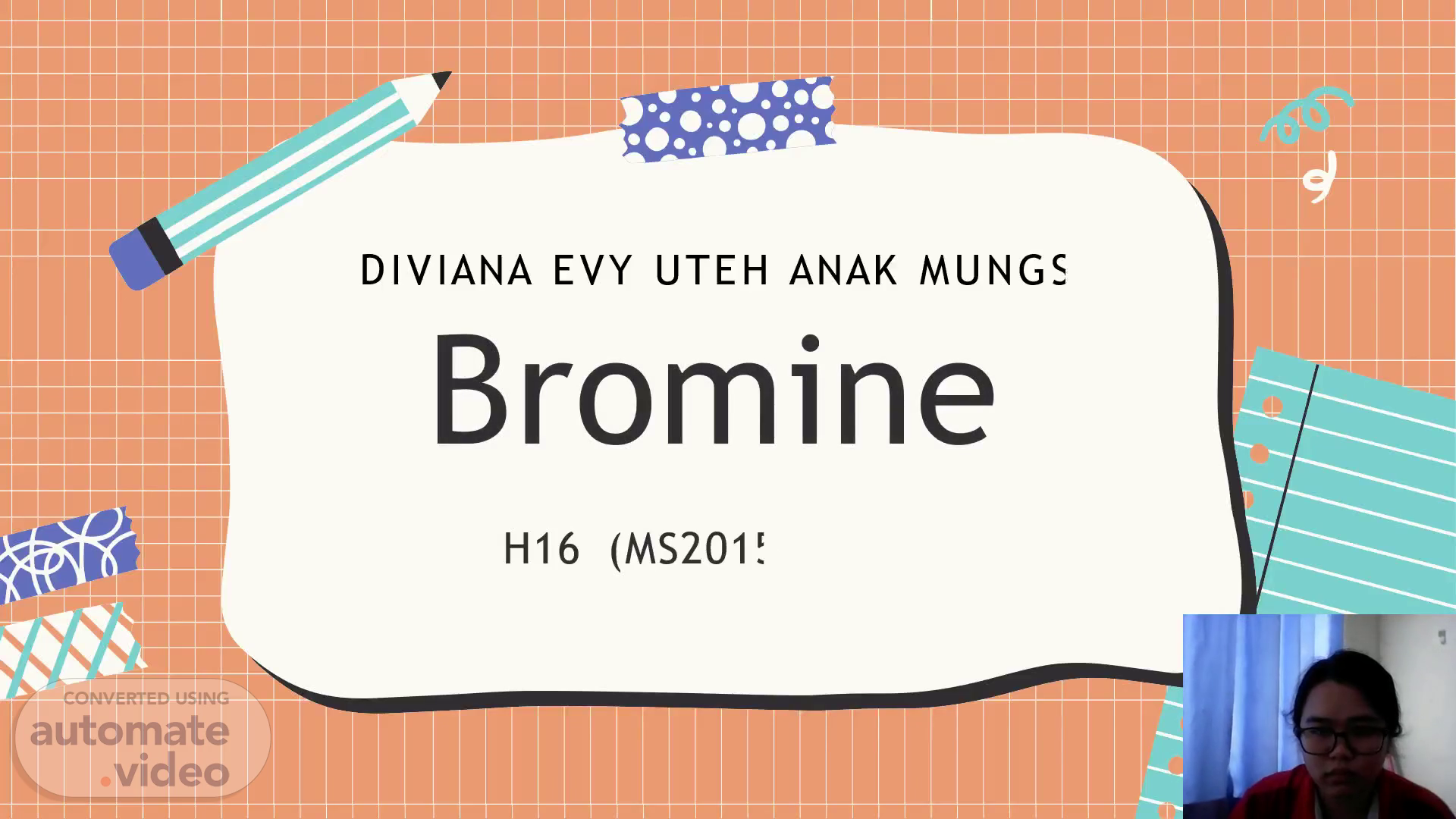Scene 1 (0s)
B r o m i n e. H 1 6 ( M S 2 0 1 5 1 7 3 0 0 6 ).
Scene 2 (6s)
. P r o t o n N o a n d E l e c t r o n i c C o n f i g u r a t i o n.
Scene 3 (18s)
B L O C K :. P o s i t i o n o f B r o m i n e. G R O U P :.
Scene 4 (23s)
I n t h e s a m e g r o u p. Group 17 elements are : F, Cl, Br, I, At, Ts Down the group, number of shell, n increase from F to Ts. T h e s h i e l d i n g e ff e c t i n c r e a s e . Thus, the attraction between valence electron and nucleus b e c o m e w e a k e r . T h e r e f o r e , t h e a t o m i c s i z e i n c r e a s e f r o m F t o T s . . . . F < C l < B r < I < A t < T s.
Scene 5 (28s)
ACROSS THE PERIOD. Period 4 elements are : K, Ca, Zn, Ga, Ge, As, Se, Br, Kr Across the period, proton number increase from K to Kr. The effective nuclear charge, Z eff increase. Thus, the attraction between the valence electron and the nucleus become stronger. Therefore, the atomic size decrease from K to Kr..
Scene 6 (36s)
The Stable Ion. For Br V a l e n ce e l e c t o n : 7.
Scene 7 (41s)
Br and Br -. Anion Br - is formed when Br atom gain one electron to achieve noble gas electron configuration. The electron-electron repulsion in Br - higher tan Br. Thus , t he attraction between nucleus and valence elctrons in become weaker. T h e r e f o r e , B r - a r e l a r g e r t h a n B r ..
Scene 8 (46s)
Thank You For Your Time!.
